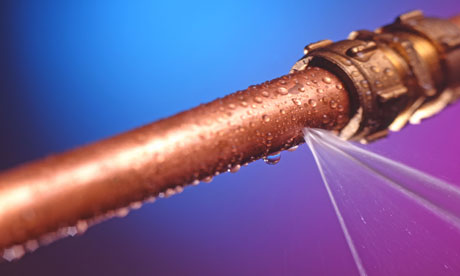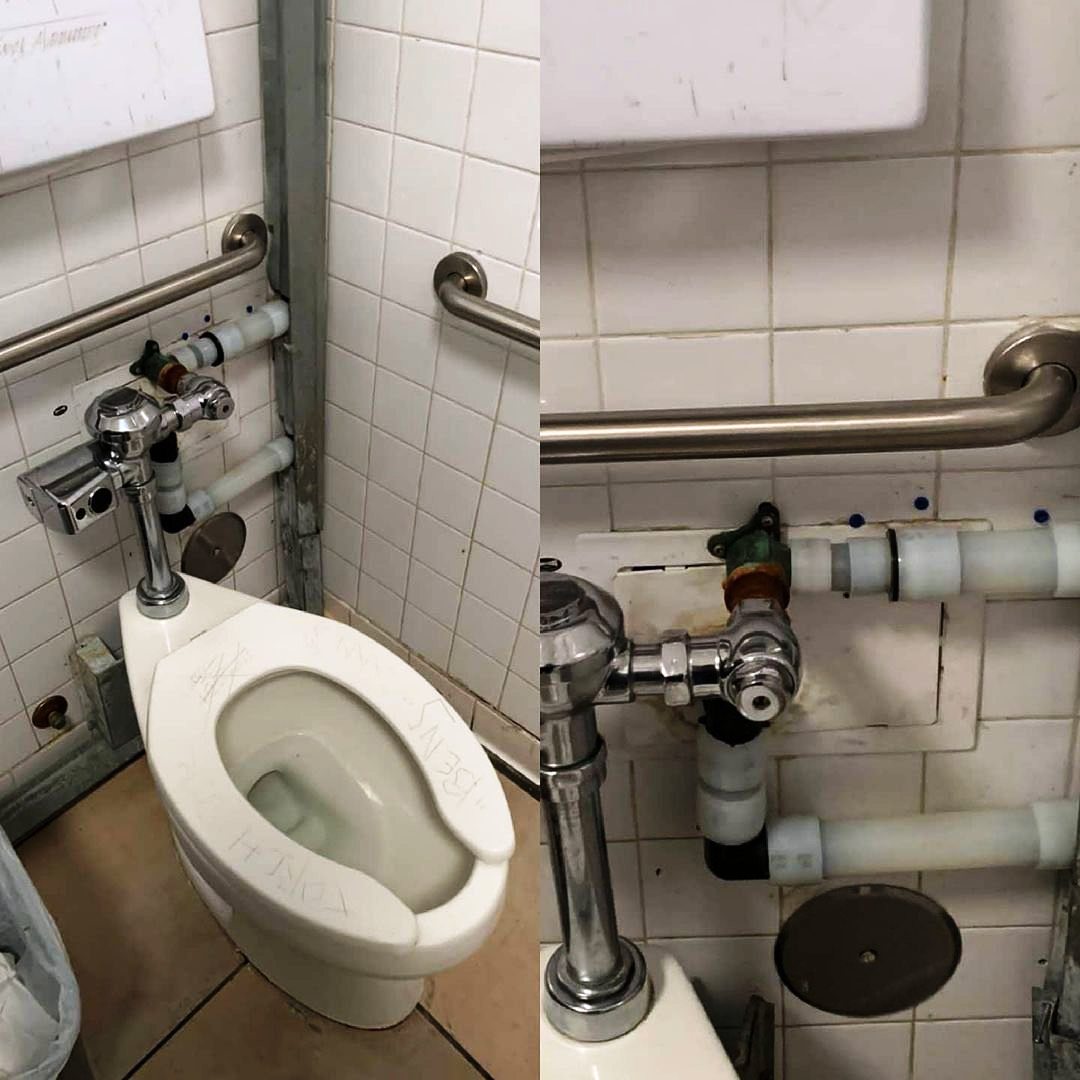Fixing Frequent Plumbing Issues Successfully
Fixing Frequent Plumbing Issues Successfully
Blog Article
Are you trying to locate know-how about Why Do My Plumbing Pipes Make A Knocking Noise?

To identify noisy plumbing, it is necessary to identify initial whether the unwanted sounds happen on the system's inlet side-in various other words, when water is turned on-or on the drainpipe side. Noises on the inlet side have differed causes: extreme water pressure, used shutoff and faucet parts, incorrectly linked pumps or various other appliances, incorrectly placed pipeline bolts, as well as plumbing runs consisting of a lot of limited bends or various other restrictions. Sounds on the drainpipe side generally stem from bad area or, similar to some inlet side noise, a layout including tight bends.
Hissing
Hissing noise that happens when a tap is opened a little normally signals too much water stress. Consult your neighborhood water company if you suspect this problem; it will be able to tell you the water stress in your location as well as can mount a pressurereducing shutoff on the incoming water system pipeline if needed.
Various Other Inlet Side Noises
Squeaking, squealing, scraping, breaking, as well as touching usually are caused by the expansion or contraction of pipelines, usually copper ones providing warm water. The audios happen as the pipes slide against loose fasteners or strike nearby home framework. You can commonly identify the place of the problem if the pipes are revealed; simply adhere to the sound when the pipes are making noise. Most likely you will certainly find a loose pipe wall mount or a location where pipelines exist so near to floor joists or other framing items that they clatter versus them. Connecting foam pipe insulation around the pipelines at the point of contact should remedy the trouble. Make certain bands as well as hangers are secure and also provide ample support. Where possible, pipeline fasteners should be affixed to large structural elements such as structure wall surfaces rather than to mounting; doing so minimizes the transmission of vibrations from plumbing to surface areas that can enhance and also transfer them. If connecting bolts to framework is unavoidable, cover pipes with insulation or other resistant material where they contact bolts, and sandwich completions of new bolts in between rubber washing machines when installing them.
Correcting plumbing runs that deal with flow-restricting tight or various bends is a last resort that must be carried out just after speaking with an experienced plumbing service provider. However, this circumstance is relatively usual in older residences that might not have been developed with indoor plumbing or that have actually seen several remodels, specifically by beginners.
Chattering or Shrilling
Intense chattering or shrilling that happens when a shutoff or faucet is switched on, which typically goes away when the fitting is opened completely, signals loose or malfunctioning internal parts. The remedy is to replace the shutoff or faucet with a new one.
Pumps and also appliances such as washing makers and also dishwashers can transfer electric motor noise to pipes if they are incorrectly linked. Connect such things to plumbing with plastic or rubber hoses-never rigid pipe-to isolate them.
Drainpipe Noise
On the drainpipe side of plumbing, the chief goals are to get rid of surface areas that can be struck by dropping or hurrying water and to insulate pipes to consist of inevitable noises.
In brand-new building and construction, bath tubs, shower stalls, toilets, and wallmounted sinks as well as containers ought to be set on or versus resistant underlayments to reduce the transmission of sound through them. Water-saving bathrooms and faucets are less noisy than traditional models; mount them as opposed to older types even if codes in your area still permit utilizing older fixtures.
Drainpipes that do not run up and down to the cellar or that branch right into straight pipe runs sustained at floor joists or other framing existing particularly troublesome noise problems. Such pipes are huge sufficient to emit substantial resonance; they additionally lug substantial quantities of water, that makes the scenario even worse. In brand-new building and construction, define cast-iron dirt pipes (the large pipes that drain toilets) if you can manage them. Their enormity consists of much of the noise made by water travelling through them. Additionally, prevent directing drains in wall surfaces shared with bedrooms and also areas where people gather. Wall surfaces consisting of drainpipes ought to be soundproofed as was explained earlier, making use of double panels of sound-insulating fiberboard and wallboard. Pipelines themselves can be wrapped with special fiberglass insulation created the purpose; such pipes have a resistant plastic skin (often containing lead). Results are not always satisfying.
Thudding
Thudding sound, commonly accompanied by shivering pipelines, when a faucet or device valve is turned off is a problem called water hammer. The noise as well as vibration are brought on by the reverberating wave of pressure in the water, which instantly has no location to go. Sometimes opening up a valve that releases water rapidly right into a section of piping consisting of a restriction, arm joint, or tee fitting can generate the same problem.
Water hammer can usually be treated by installing installations called air chambers or shock absorbers in the plumbing to which the problem shutoffs or taps are linked. These tools enable the shock wave developed by the halted flow of water to dissipate airborne they contain, which (unlike water) is compressible.
Older plumbing systems may have brief vertical areas of capped pipe behind wall surfaces on faucet runs for the exact same objective; these can ultimately loaded with water, decreasing or ruining their performance. The remedy is to drain pipes the water system totally by shutting down the main water shutoff and opening up all taps. Then open the major supply shutoff and close the taps individually, starting with the faucet nearest the shutoff and also finishing with the one farthest away.
WHY IS MY PLUMBING MAKING SO MUCH NOISE?
This noise indeed sounds like someone is banging a hammer against your pipes! It happens when a faucet is opened, allowed to run for a bit, then quickly shut — causing the rushing water to slam against the shut-off valve.
To remedy this, you’ll need to check and refill your air chamber. Air chambers are filled with — you guessed it — air and help absorb the shock of moving water (that comes to a sudden stop). Over time, these chambers can fill with water, making them less effective.
You’ll want to turn off your home’s water supply, then open ALL faucets (from the bathroom sink to outdoor hose bib) to drain your pipes. Then, turn the water back on and hopefully the noise stops! If you’re still hearing the sound, give us a call to examine further.
Whistles
Whistling sounds can be frustrating, as sometimes the source isn’t easily identified. However, if you can pinpoint which faucet or valve that may be the cause, you’ll likely encounter a worn gasket or washer — an easy fix if you replace the worn parts!Whistling sounds from elsewhere can mean a number of things — from high water pressure to mineral deposits. Your best plan of attack here is to give our plumbing experts a call. We’ll be able to determine where the noise is coming from and what the cause may be, then recommend an effective fix!
Cracks or Ticks
Cracking or ticking typically comes from hot water going through cold, copper pipes. This causes the copper to expand resulting in a cracking or ticking sound. Once the pipes stop expanding, the noise should stop as well.
Pro tip: you may want to lower the temperature of your water heater to see if that helps lessen the sound, or wrapping the pipe in insulation can also help muffle the noise.
Bangs
Bangs typically come from water pressure that’s too high. To test for high water pressure, get a pressure gauge and attach it to your faucet. Water pressure should be no higher than 80 psi (pounds per square inch) and also no lower than 40 psi. If you find a number greater than 80 psi, then you’ve found your problem!
Next step is to give us a call in order to install a pressure regulator. Trust us, you don’t want to wait to resolve this issue. Not only is the sound annoying, but high water pressure can be destructive to your home — including damaging certain appliances, like your washer and dishwasher.
Dripping
You might be accustom to the slow quiet drip your kitchen faucet makes. You might have even tuned out your bathroom sink dripping and drabbing all day long — but it’s time to find its cause.
A slow drip could signify a variety of easy to fix issues, such as a worn out O ring, or loose part. And by ignoring the drip, you could be wasting up to 2,000 gallons of water a year! So start conserving water — get it looked at ASAP.
https://www.pwessig.com/blog/2018/december/why-is-my-plumbing-making-so-much-noise-/

As a passionate reader on How To Fix Noisy Pipes, I imagined sharing that piece was a great idea. Sharing is nice. Who knows, you could be doing someone a favor. Thanks for your time. Kindly stop by our site back soon.
Quick relief? Dial! Report this page